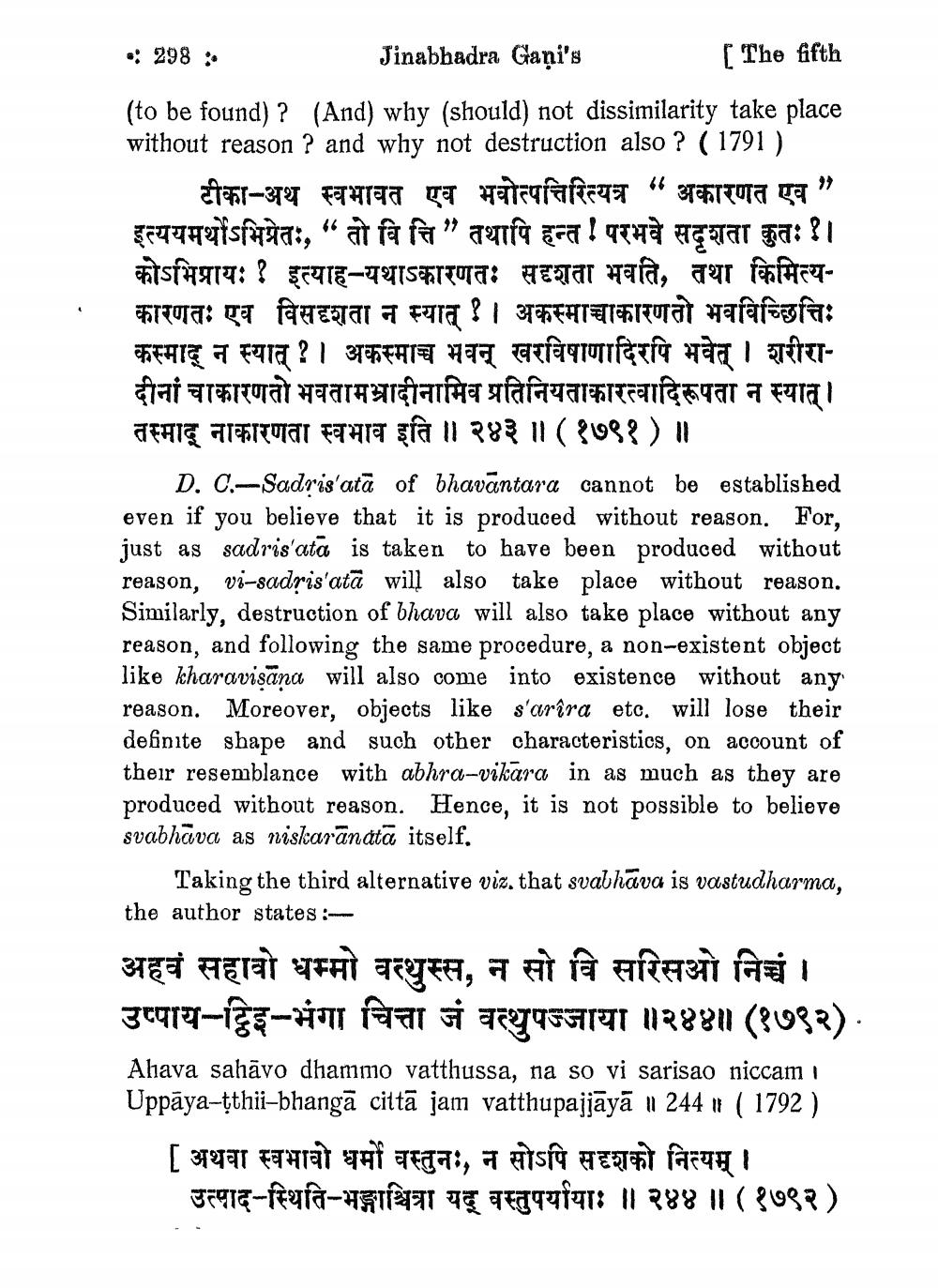________________
.: 298 : Jinabhadra Gaņi's
[The fifth (to be found) ? (And) why (should) not dissimilarity take place without reason ? and why not destruction also ? ( 1791 )
टीका-अथ स्वभावत एव भवोत्पत्तिरित्यत्र " अकारणत एव" इत्ययमर्थोऽभिप्रेतः, " तो वित्ति" तथापि हन्त ! परभवे सदशता कुतः । कोऽभिप्रायः ? इत्याह-यथाऽकारणतः सदृशता भवति, तथा किमित्यकारणतः एव विसदृशता न स्यात् । अकस्माच्चाकारणतो भवविच्छित्तिः कस्माद् न स्यात् ? । अकस्माच भवन् खरविषाणादिरपि भवेत् । शरीरादीनां चाकारणतो भवतामभ्रादीनामिव प्रतिनियताकारत्वादिरूपता न स्यात् । तस्माद् नाकारणता स्वभाव इति ॥ २४३ ॥ (१७९१)॥
D. C.-Sadris'atā of bhavantara cannot be established even if you believe that it is produced without reason. For, just as sadris'ata is taken to have been produced without reason, vi-sadrrisata will also take place without reason. Similarly, destruction of bhava will also take place without any reason, and following the same procedure, a non-existent object like kharavisand will also come into existence without any reason. Moreover, objects like s'arira etc. will lose their definite shape and such other characteristics, on account of their resemblance with abhra-vikara in as much as they are produced without reason. Hence, it is not possible to believe svabhava as niskaranátā itself.
Taking the third alternative viz. that svabhāva is vastudharma, the author states:अहवं सहावो धम्मो वत्थुस्स, न सो वि सरिसओ निच्चं । उप्पाय-ट्ठिइ-भंगा चित्ता जं वत्थुपज्जाया ॥२४४॥ (१७९२). Ahava sahāvo dhammo vatthussa, na so vi sarisao niccam i Uppāya-tthii-bhanga citta jam vatthupajjaya ॥ 244 ॥ ( 1792) [ अथवा स्वभावो धर्मो वस्तुनः, न सोऽपि सदृशको नित्यम् ।
उत्पाद-स्थिति-भङ्गाश्चित्रा यद् वस्तुपर्यायाः ॥ २४४ ॥ (१७९२)




